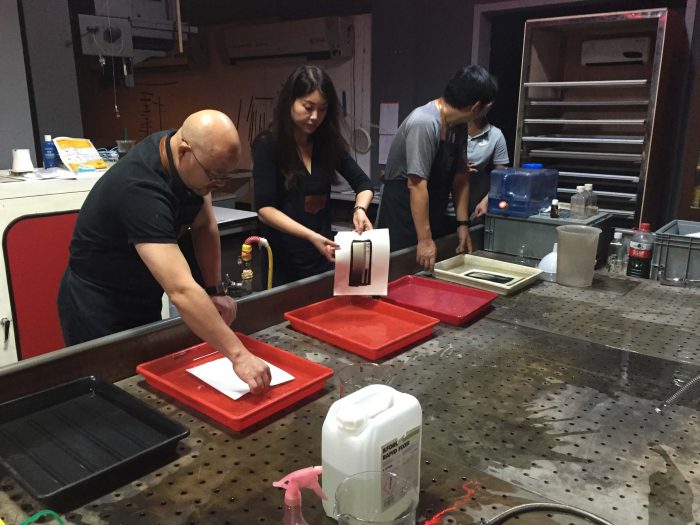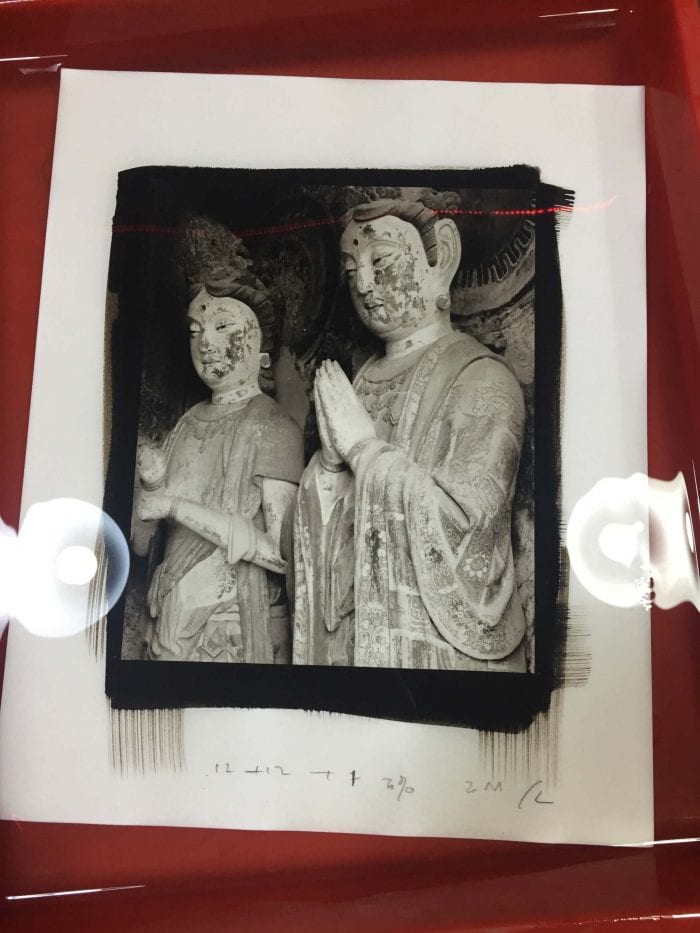Beijing Workshop
Next to my cameras, my passport is my most prized possession. It has given me entre into more places in the world than I could have ever imagined. This summer doors opened for me to return to Beijing to teach an eight-day platinum printing class.
The invitation came through Mr. Lu Di, whose company, Shan Shui Zhi Jian, offers a wide variety of photographic workshops out of their studio space in the Chaoyang District (eastern Beijing). Mr. Chen Zeleng is the director of the workshops and runs the day-to-day workings of the business. This is not a tourist area but an area of high-rise apartment buildings with offices and businesses on the ground floor.

For myself, teaching a workshop is often stressful, especially in a new place and in a language I don’t speak, but I enjoy the challenges and the excitement of the students as they meet with success. Though Mr. Chen and I spent the first two days preparing the darkroom and materials to make sure we were going to have a smooth flowing working process there were still unexpected problems to solve during the workshop. Just like working at home!

One of the nicest surprises was a dinner Mr. Lu Di threw for me the night before the workshop started. Among those who invited were my friends from Alpa China, the gallery owner who first exhibited my work in Beijing, and ten students from the 2013 workshop. Mr. Su, drove 2800 km from Guilin for the dinner and a few days of photographing with Mr. Lu Di.
During the eight-day workshop, we covered everything from shooting and developing film for platinum printing to making curves for digital negatives for specific computer and printer combinations to making beautiful platinum prints. My three students Mr. Lin Wenge, Ms. Wang Yiwen, and Mr. Chen Jun worked very hard at learning the process. Although I had made a curve for the Epson printer the studio had, they were all going to use the newer Epson P800 printer so one student ordered her printer and had it delivered to the workshop so they could make the curves on the printer they would be using at home. Talk about a desire to learn and dedication to their craft!
Determined to make the best curves possible we spent two full days making them, reading them on the densitometer, and plotting them on a graph. We continually refined them and finally printed the step wedges to see if the numbers from the densitometer matched the visual reality of the step wedges.

The last three days, they began mastering how the chemistry affected the print and the importance of making the original digital file look and feel like what they wanted the final print to be. They re-affirmed the Ansel Adams mantra that the negative (even a digital negative) was the score, and the print was the performance. They discovered that at some point it was better to go back and rework the file rather than expecting changes in chemistry, paper, developers to do all the work. And they discovered the heartbreak of dry down. When a print looks perfect wet, it is going to change when it dries.

It was a very successful workshop and I expect all three students will continue making beautiful platinum prints. I worked with two excellent translators and Mr. Chen did a great job of keeping everything running smoothly. I also have to thank my friend Mr. Wu and his family, for their incredible hospitality during my stay.

Another adventure, thanks to my passport.
Tillman